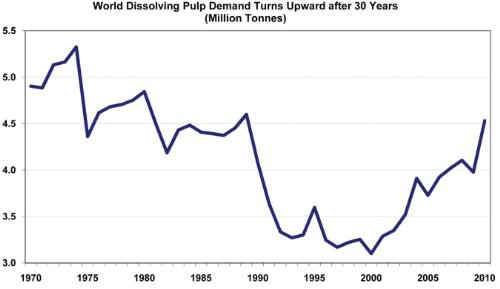

The big turnaround in dissolving pulp demand has been led by the viscose fiber market where the popularity of rayon, mainly for garment production, has been boosted by limited supplies and surging prices of cotton, the report notes. China, where dissolving pulp consumption for garment production has tripled over the past 10 years, accounts for all demand growth in the past decade.
Such strong demand and high prices have attracted pulp producers in the southern hemisphere to start new dissolving pulp lines, while in the northern hemisphere paper grade mills are converting to dissolving pulp.
"We're looking at getting a 10% addition to capacity in just one year -- an indication of how excited people are getting about this market," said Rod Young, chief economic advisor to RISI, and author of the study. "A big concern is that capacity keeps growing rapidly and we get into an overcapacity situation."
The main end uses of dissolving pulp are:
Ethers and microcrystalline cellulose (MCC) used in pharmaceuticals and as a food additive.
TAPPI
http://www.tappi.org/